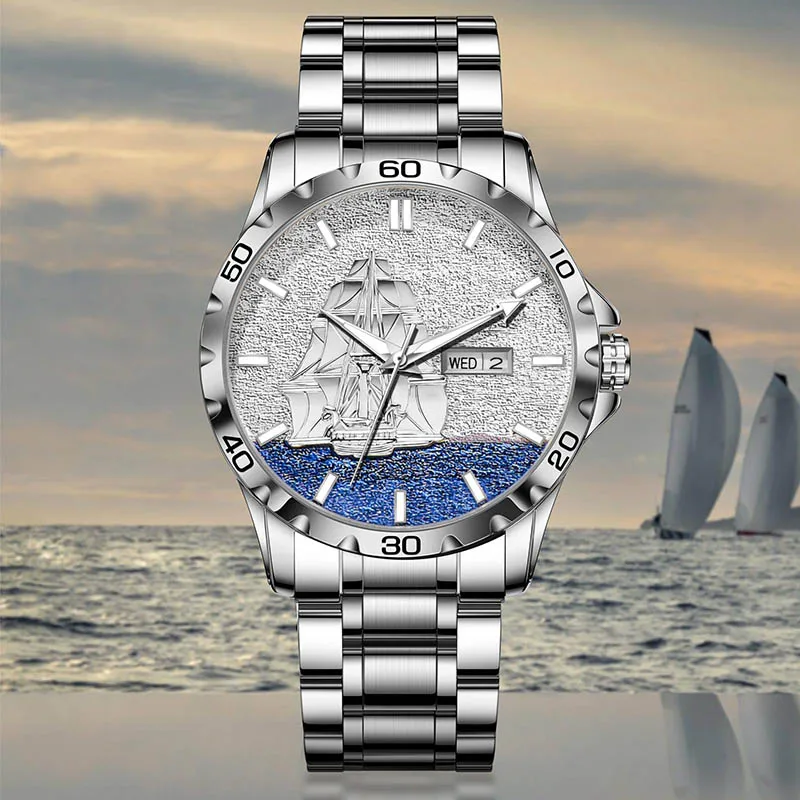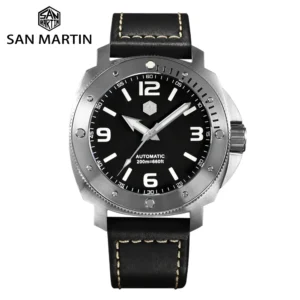Introduction: Understanding Day-Date Displays in Modern Timepieces
The day-date complication represents one of watchmaking’s most practical innovations, providing wearers with quick access to two essential pieces of information: the current day of the week and date of the month. This dual display eliminates the need to check your phone or calendar, offering convenience right on your wrist. The beauty of day-date watches lies in their perfect marriage of functionality and style, making them ideal companions for daily wear.
Throughout this guide, we’ll explore everything you need to know about day-date timepieces – from their technical underpinnings to practical selection criteria. Whether you’re new to the world of watches or looking to add a functional everyday timepiece to your collection, understanding the nuances of day-date displays will help you make an informed choice.
Many iconic models have helped establish the day-date display as a horological standard. These displays typically feature abbreviated or full day names in a dedicated window, often positioned at 12 o’clock or 3 o’clock, with a separate date window nearby. This combination creates a balanced aesthetic while providing maximum utility.
The history of dive watch engineering shares similar principles of combining function with form, though day-date complications often present unique technical challenges. Understanding how day-date automatic watches work can deepen your appreciation for these deceptively complex timepieces. For those ready to explore options, our collection of day-date automatic watches showcases a range of styles suitable for everyday wear.
The Evolution and Function of Day-Date Complications
Day-date complications have undergone significant evolution since their inception. What began as separate day and date indications eventually merged into the coordinated display we recognize today. Early versions required manual adjustments for both functions, while modern iterations offer streamlined setting mechanisms that make ownership much more convenient.
At its core, a day-date mechanism works through an intricate system of gears, springs, and discs. The date function typically operates via a date disc with 31 printed numbers that rotates beneath a window in the dial. The day function uses a similar principle but with a disc containing the seven days of the week. These systems are synchronized with the hour and minute hands, advancing automatically at midnight.
Two main types of day-date change mechanisms exist: instantaneous change (which switches precisely at midnight) and gradual change (where the transition happens over several hours). The instantaneous change is generally considered superior but requires more complex engineering. Many watches also feature quick-set functions that allow adjusting the day or date without moving the hands through a full 24-hour cycle.
What appears simple on the dial actually requires remarkable mechanical coordination behind the scenes. Some advanced models feature bilingual day wheels that allow displaying the day in two different languages, further adding to the complication’s complexity.
The durability of automatic watches is particularly relevant when discussing day-date mechanisms, as these additional complications introduce more components that must withstand years of daily use. Much like the evolution of dive watch technology, day-date mechanisms have benefited from improved materials and manufacturing processes, enhancing their reliability and longevity.
Practical Advantages of Day-Date Watches for Daily Life
Instant Time Context
The most obvious benefit of a day-date watch is immediate access to two critical pieces of information. Rather than just knowing it’s the “15th,” you immediately know it’s “Monday the 15th” – providing fuller time context with a single glance. This seemingly small convenience adds up significantly over time.
Mental Organization
Day-date watches offer subtle cognitive benefits by keeping you anchored in the week. During busy periods when days blend together, a quick glance at your wrist can reorient you. This temporal awareness improves planning and time management without requiring digital notifications or calendar checks.
Professional Reliability
In professional settings, day-date watches provide discreet access to essential information during meetings or presentations. Whether confirming deadlines, scheduling follow-ups, or planning your workweek, having this information readily accessible on your wrist maintains your professional appearance without interrupting workflow.
Practical Functionality
For travelers, day-date watches help combat disorientation when crossing time zones or dealing with jet lag. They serve as reliable anchors when your internal clock feels off balance. Similarly, for shift workers with irregular schedules, having both day and date visible helps maintain temporal awareness when regular weekly rhythms are disrupted.
Beyond these specific uses, day-date watches strike an ideal balance between functionality and aesthetics. They offer practical information without overwhelming the dial, maintaining the clean, timeless appearance that makes watches enduring accessories. Our automatic watches collection includes numerous options that balance these considerations beautifully.
Essential Criteria for Selecting Your Everyday Day-Date Watch
Choosing the right day-date watch for daily wear requires balancing several important factors. Unlike special occasion timepieces, an everyday watch must withstand constant use while remaining comfortable and visually versatile enough to complement various outfits and situations.
The ideal everyday day-date watch combines reliable timekeeping with practical durability and aesthetic versatility. Movement quality forms the foundation, determining accuracy and maintenance requirements. Construction elements like case material, crystal type, and water resistance dictate how the watch will hold up to daily challenges. Readability ensures the day-date function serves its intended purpose, while comfort features make the watch pleasant to wear throughout long days.
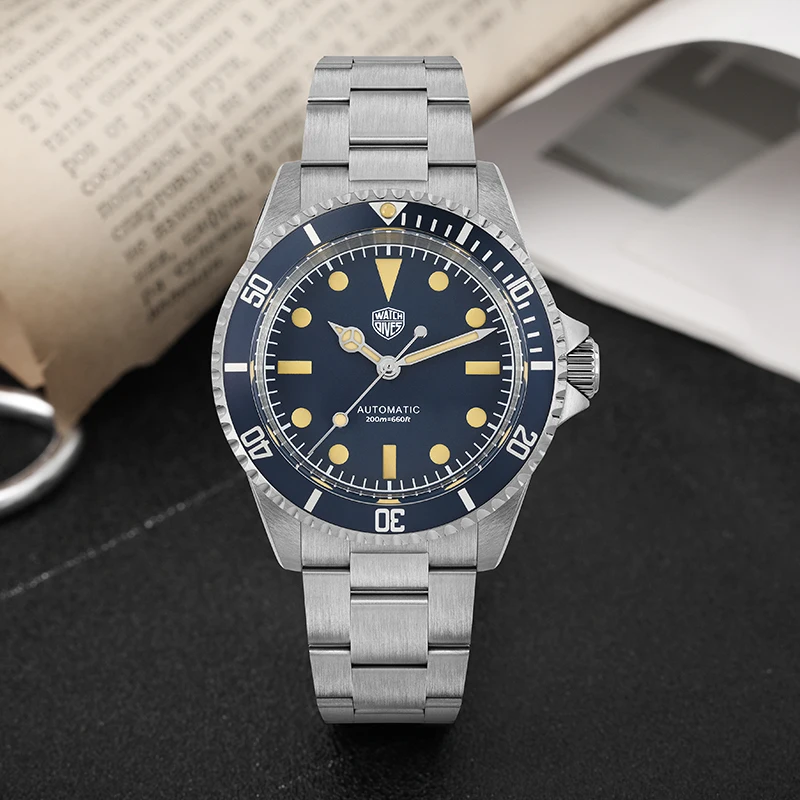
Brand reputation matters too, not just for prestige but because established manufacturers often provide better customer support and service options. Additionally, availability of parts and qualified service technicians should factor into your decision.
In the following sections, we’ll break down each criterion in detail to help you navigate your options. For those interested in more advanced calendar functions, our perpetual calendar automatic watches offer interesting alternatives to standard day-date displays, though with different practical considerations.
Movement Options: Automatic vs. Quartz Day-Date Mechanisms
Automatic Day-Date Movements
Automatic day-date movements represent the pinnacle of traditional watchmaking, combining mechanical ingenuity with practical functionality. These self-winding mechanisms harness the energy from your wrist movement to power both timekeeping and calendar functions.
Pros:
– No battery replacement needed
– Smooth sweeping seconds hand
– Heritage and craftsmanship appeal
– Often feature beautiful finishing visible through display casebacks
– Can last for generations with proper care
Cons:
– Requires regular wearing or use of a watch winder
– Needs servicing every 5-10 years
– Less accurate than quartz (typically +/- 10-20 seconds per day)
– Day-date mechanism adds complexity, potentially increasing service costs
– Generally more expensive initially
Most automatic day-date mechanisms feature a power reserve of 38-42 hours, meaning they’ll continue running for that duration when removed from your wrist. Higher-end movements may offer extended power reserves of 70+ hours, allowing the watch to remain accurate through a weekend off the wrist.
Quartz Day-Date Movements
Quartz day-date watches utilize battery power and crystal oscillation technology to deliver highly accurate timekeeping with calendar functions.
Pros:
– Exceptional accuracy (typically +/- 15 seconds per month)
– More affordable entry price points
– Low maintenance (battery change every 2-5 years)
– Always ready to wear, even after sitting idle
– Often thinner and lighter than automatic alternatives
Cons:
– Battery replacements required
– Less emotional connection for watch enthusiasts
– Typically lower resale value
– Missing the craftsmanship element of mechanical watches
– “Ticking” seconds hand rather than smooth sweep
The enduring importance of day-date display in modern timepieces shows in both movement types, with each offering distinct advantages. Automatic movements appeal to traditionalists who appreciate mechanical craftsmanship, while quartz models offer unmatched convenience and accuracy at more accessible price points.
Durability Factors: Materials and Construction for Daily Wear
When selecting a day-date watch for everyday wear, durability becomes paramount. The materials and construction quality directly impact how well your timepiece will withstand daily challenges and maintain its appearance over time.
Case Materials
Stainless Steel: The gold standard for everyday watches, offering excellent corrosion resistance, durability, and a balanced weight. 316L stainless steel is most common, with higher grades available in premium models.
Titanium: Approximately 40% lighter than steel with comparable strength and superior corrosion resistance. Ideal for those seeking comfort during extended wear, though more prone to showing surface scratches.
Ceramic: Extremely scratch-resistant but potentially brittle if impacted. Modern ceramic watches offer a distinctive appearance with excellent durability for surface wear.
Gold and Precious Metals: Beautiful but soft compared to steel or titanium. Best reserved for dress watches or special occasions rather than true everyday beaters.
Crystal Options
Sapphire Crystal: With a hardness of 9 on the Mohs scale (diamond is 10), sapphire provides superior scratch resistance. Anti-reflective coating further enhances readability.
Mineral Crystal: More affordable but substantially less scratch-resistant (5.5-6 on Mohs scale). Acceptable for budget watches but will show wear over time.
Acrylic: Rarely used in modern watches except for vintage-inspired designs. Scratches easily but can be polished out.
Water Resistance
For truly everyday wear, 100m/330ft water resistance represents a sweet spot, providing protection against rain, handwashing, and occasional swimming. 50m/165ft suffices for rain and splashes, while 30m/100ft should be kept away from significant water exposure.
The timeline of diving watch innovations has contributed significantly to improving water resistance technology across all watch categories, including day-date models. These advancements have made robust water protection standard even in watches not specifically designed for diving.
Readability and Design: Optimizing Your Day-Date Display
The effectiveness of a day-date watch hinges on how easily you can read its information at a glance. Several design elements contribute to optimal readability while maintaining aesthetic appeal.
Day-Date Window Placement
The positioning of day and date displays significantly impacts both readability and visual balance. Common configurations include:
3 o’clock position: The traditional and most common placement, offering good readability without disrupting the dial’s symmetry. Date windows appear alone here, sometimes with day displays at 12 o’clock.
12 o’clock position: Often features both day and date in a double window, creating balanced symmetry. This placement works well on busier dials like chronographs.
Day at 12, date at 6: Creates perfect vertical symmetry while separating the information for clarity.
Day at 9, date at 3: Provides horizontal balance but is less common due to potential readability issues for the day display.
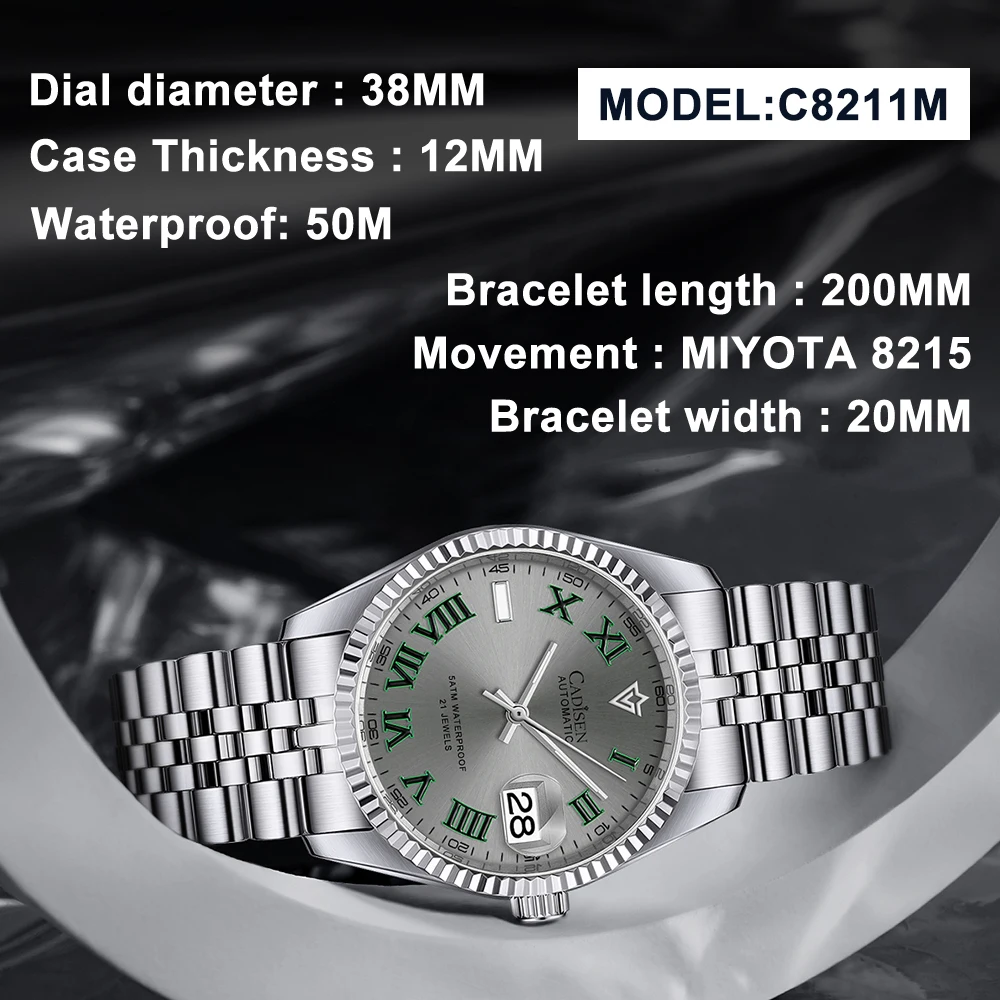
Contrast and Visibility
Effective day-date displays employ strong contrast between the text and background. Black text on a white disc provides maximum legibility, though some watches feature color-coded days (red for Sundays, for example) as useful visual indicators.
Font selection matters tremendously. Sans-serif fonts generally offer better legibility at small sizes. The text size must be large enough to read easily without dominating the dial aesthetically.
Many watches with automatic dress watch styling feature elegantly integrated day-date displays that maintain formal aesthetics while providing practical information. The best designs achieve this balance through thoughtful integration of the windows into the overall dial composition.
Comfort and Fit: Ensuring All-Day Wearability
A watch worn daily must prioritize comfort above all. Even the most beautiful timepiece will remain unworn if it feels awkward or irritating on the wrist.
Case Dimensions
For most wrists, everyday watches are most comfortable in the 36-42mm (1.4-1.65in) diameter range. However, the often-overlooked lug-to-lug measurement (typically 44-50mm/1.7-2in) actually determines how a watch fits your particular wrist shape. A watch whose lugs extend beyond your wrist will never feel properly balanced.
Case thickness significantly impacts how a watch feels and how easily it slides under cuffs. Day-date complications can add thickness compared to simpler watches, with 11-13mm (0.43-0.51in) being typical. Thin automatic dress watches offer more comfort for those with smaller wrists or who wear fitted shirts regularly.
Bracelet and Strap Considerations
Metal bracelets provide durability and water resistance ideal for active lifestyles but add weight. Look for solid end links and a secure clasp with micro-adjustment capabilities to accommodate wrist size fluctuations throughout the day.
Leather straps offer lightweight comfort and formal appearance but require more care and regular replacement. Quality stitching and lining prevent premature wear and skin irritation.
Rubber or synthetic straps provide excellent durability and water resistance while remaining lightweight. These modern options work particularly well for active lifestyles.
Potential Challenges of Day-Date Watches: What to Consider
While day-date watches offer numerous benefits, they come with certain considerations worth understanding before making your purchase.
The “Danger Zone” for Setting
Mechanical day-date watches have a critical period (typically between 9 PM and 3 AM) when the date change mechanism is engaged. Setting the day or date during this time can damage the delicate components, potentially resulting in expensive repairs. Always adjust day-date functions when the hands are positioned away from this window, ideally around 6 o’clock.
Complex Setting Procedures
Day-date watches often require more involved setting procedures than simpler timepieces. Some use the crown pulled to different positions, while others incorporate hidden pushers for adjusting the day display. Learning your specific watch’s correct setting procedure prevents frustration and potential damage.
Visual Considerations
The additional windows required for day-date displays inevitably alter a dial’s aesthetics. Some purists prefer the cleaner look of no-date or date-only watches. Day-date complications also typically result in slightly thicker case profiles to accommodate the additional mechanism layers.
Price Premium
The added complexity of day-date movements generally commands a price premium over simpler alternatives. This difference reflects the additional components, engineering, and assembly time required. The value proposition depends on how frequently you’ll utilize these features in daily life.
Top Day-Date Watches for Everyday Wear: Curated Selections
After analyzing numerous day-date watches against our criteria for everyday wearability, we’ve identified outstanding options across different price categories. Each selection balances durability, readability, comfort, and aesthetic versatility.
Affordable Excellence
In the accessible range, several watches deliver impressive day-date functionality without compromising quality. These models typically feature reliable Japanese automatic or quartz movements, sapphire or high-quality mineral crystals, and at least 50m water resistance. Stainless steel construction provides durability, while classic styling ensures versatility across different settings.
Key strengths in this category include excellent value for money and low maintenance requirements. These watches make ideal daily companions for those entering the watch world or seeking practical functionality without significant investment.
Mid-Range Marvels
The sweet spot for many enthusiasts lies in the mid-range segment, where noticeable improvements in movement quality, finishing, and features become apparent. These watches typically feature Swiss or high-end Japanese automatic movements with better accuracy and smoother date transitions. Construction quality improves with better bracelets, clasps, and overall fit and finish.
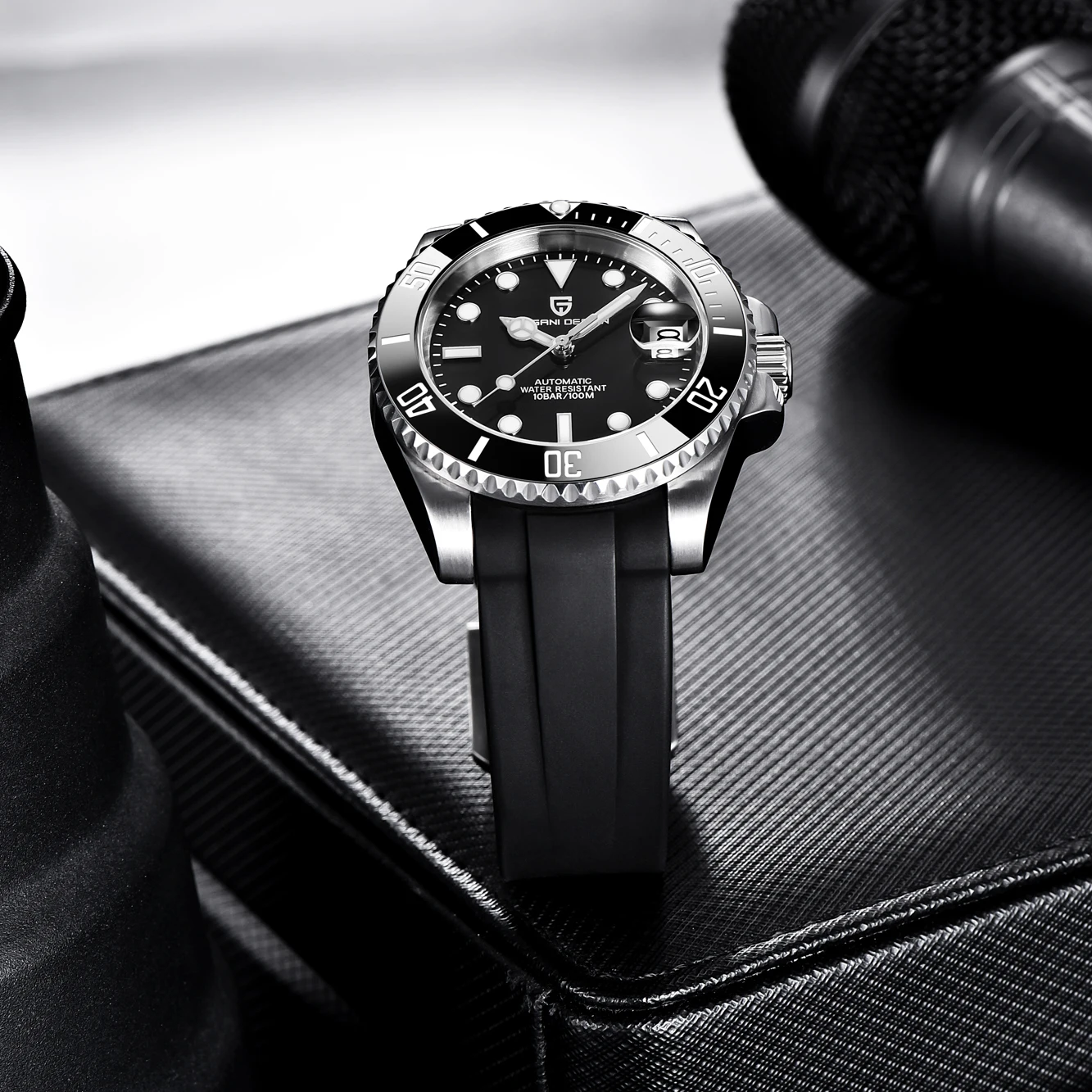
Many of these watches strike the perfect balance between quality and value, often serving as the backbone of a versatile collection. Their improved durability and timeless styling ensure they remain relevant despite changing trends.
Premium Performers
At the premium level, day-date watches offer exceptional finishing, in-house movements, and distinctive character. These timepieces feature meticulous attention to detail, from perfectly aligned day-date windows to flawlessly executed dials and hands. Movements often include special features like extended power reserves or anti-magnetic properties.
While these watches command higher prices, they offer tangible improvements in craftsmanship, exclusivity, and long-term value retention. For many enthusiasts, these represent investment pieces that will provide decades of reliable service while potentially appreciating in value.
Rugged automatic field military watches often include practical day-date displays designed for maximum legibility in challenging conditions, making them excellent choices for active lifestyles.
Military Inspired Automatic Watches, Rugged Automatic Watches, Tactical Automatic Watches
Price range: $852.14 through $994.60 Select options This product has multiple variants. The options may be chosen on the product pageClassic Automatic Dress Watches, Day Date Automatic Watches, Perpetual Calendar Automatic Watches
Price range: $540.60 through $574.60 Select options This product has multiple variants. The options may be chosen on the product pageAutomatic Chronograph Watches, Chronograph Pilot Watches
Price range: $233.36 through $237.58 Select options This product has multiple variants. The options may be chosen on the product pageClassic Automatic Dress Watches, GMT Automatic Watches, GMT Pilot Watches
Price range: $1,240.86 through $1,463.33 Select options This product has multiple variants. The options may be chosen on the product pageAutomatic Chronograph Watches, Classic Style Dive Watches
$3,053.06 Select options This product has multiple variants. The options may be chosen on the product pageAutomatic Skeleton Watches, Open Heart Automatic Watches
$98.36 Select options This product has multiple variants. The options may be chosen on the product page
Setting and Maintaining Your Day-Date Timepiece
Proper care ensures your day-date watch will provide years of reliable service. Following these guidelines will protect both functionality and appearance.
Proper Setting Procedure
- For automatic watches, first ensure the watch is running by winding it manually if it has stopped
- Pull the crown to the middle position (typically position 2)
- Turn the crown in one direction to set the date (usually clockwise)
- Turn in the opposite direction to set the day (or use a dedicated pusher if applicable)
- Push the crown back to position 1 and pull it fully out to position 3
- Set the time, being sure to pass through midnight to synchronize the day-date change
- Push the crown back and ensure it’s fully secured, especially on water-resistant models
Critical Warning: The Danger Zone
Never adjust the day or date when the watch hands are positioned between 9 PM and 3 AM. During this period, the date change mechanism is engaged, and adjustments can cause serious damage to the movement. If you’re unsure of whether it’s AM or PM, rotate the hands until you see the date change, note that it’s midnight, then set your time accordingly.
Regular maintenance for day-date watches follows similar schedules to other mechanical timepieces, with servicing recommended every 5-7 years. Understanding how day-date complications work can help you better appreciate and care for these sophisticated mechanisms.
How Day-Date Compares: Alternatives for Everyday Watches
When considering a day-date watch, it’s worth exploring how this configuration compares to alternatives to ensure it best meets your needs.
Day-Date vs. Date-Only
Date-only watches offer cleaner dials with less visual complexity while still providing the most frequently referenced calendar information. They’re typically thinner and slightly less expensive than comparable day-date models. However, they lack the day-of-week reference that many find valuable for weekly planning and orientation.
Day-Date vs. No-Date
No-date watches represent horological minimalism, focusing solely on timekeeping. Their clean aesthetic appeals to purists and those who prefer uninterrupted dial designs. Without date complications, these watches are often simpler to maintain and set. However, they require external references for calendar information that day-date watches provide at a glance.
Advanced Calendar Options
Beyond standard day-date configurations, more sophisticated calendar watches exist. Annual calendars require adjustment only once yearly (at the end of February), while perpetual calendars automatically account for varying month lengths and leap years. These advanced complications come with significant price premiums and additional complexity.
The right choice depends entirely on your lifestyle and preferences. Those who regularly reference both day and date information will appreciate the convenience of having both on the wrist, while others might prefer simpler alternatives.
Frequently Asked Questions About Day-Date Timepieces
What exactly is the “danger zone” when setting a day-date watch?
The danger zone refers to the period between approximately 9 PM and 3 AM when the day-date change mechanism is actively engaging. During this time, the gears and springs that control the calendar function are partially engaged, making manual adjustment potentially damaging to these components. Always set day-date functions when the hands are positioned well away from midnight.
How does the day change mechanism work specifically?
Most day-date watches use a system of cams and springs that store energy throughout the day. As the hour hand approaches midnight, this energy is released to advance both day and date discs. The mechanism typically includes star wheels, jumpers, and tensioning springs working together to create either an instantaneous or gradual change at midnight.
Are day-date watches more expensive to maintain than simpler watches?
Generally yes, though the difference isn’t dramatic. The additional components in day-date mechanisms require more time and expertise during service, typically increasing maintenance costs by 10-20% compared to time-only models. However, regular maintenance intervals remain similar.
Can day-date functions be added to existing watches?
In most cases, no. The day-date mechanism is integral to the movement design, requiring specific space allocations and component arrangements. Converting a simpler watch would require replacing the entire movement and potentially modifying the dial and case.
How do I choose between different day-date display layouts?
Consider both readability and aesthetics. The traditional 3 o’clock position offers excellent glanceability, while a day window at 12 with date at 3 creates balanced asymmetry. Personal preference plays a significant role, but ensure the chosen layout allows easy reading in various lighting conditions.
Advanced Features: Beyond Basic Day-Date Displays
For enthusiasts seeking something beyond conventional day-date displays, watchmakers offer several innovative variations that combine functionality with distinctive aesthetics.
Retrograde day-date displays present information along an arc rather than in traditional windows. As the indicator reaches the end of its scale (the end of the week or month), it dramatically snaps back to the beginning position. This dynamic presentation adds visual interest while maintaining functionality.
Big date displays use larger numerals for the date, significantly enhancing readability. When combined with day displays, these create highly legible yet sophisticated calendar functions particularly valuable for those with vision concerns.
Some modern hybrid watches incorporate digital day-date displays alongside traditional analog hands, offering the best of both worlds. These displays can include backlighting for nighttime legibility while maintaining classic watch aesthetics during normal conditions.
Multilingual day displays represent another advanced feature, allowing users to select their preferred language for the day indication. These typically use rotating discs with different languages printed in sequence, adding practical versatility for international users or language enthusiasts.
These specialized features typically appear in more exclusive timepieces, adding both character and functionality. They represent the continuing innovation in how watchmakers approach the seemingly simple task of displaying calendar information on the wrist.

